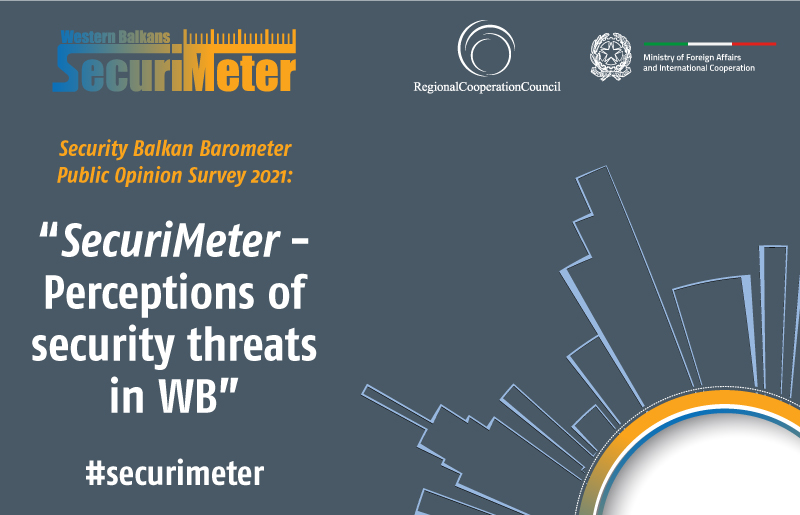- Home/
- News
A Closer Look at the Radicalization Awareness Network
The Radicalization Awareness Network (RAN) started operating in 2011 as one of the tools of the European Commission to increase Europe’s security through the EU Internal Security Strategy.
According to this document, five strategic objectives are set, considering ‘Prevent terrorism and address radicalization’ as one of them.
In order to achieve this important goal, three action-lines were also defined:
- Empower communities to prevent radicalization and recruitment;
- Cut off terrorists’ access to funding and materials and follow their transactions; and
- Protect transport
RAN is the European Commission’s method of operationalizing the first of these actions.
The RAN evolved into the RAN Centre of Excellence on 1 October 2015.
RAN has been defined by the European Commission as “a network of frontline or grassroots practitioners from around Europe who work daily with people who have already been radicalised, or who are vulnerable to radicalization. Practitioners include police and prison authorities, but also those who are not traditionally involved in counter-terrorism activities, such as teachers, youth workers, civil society representatives, local authorities representatives and healthcare professionals.”
RAN is much more than a simple professional network.
RAN’s main objectives can be described as follows:
- To facilitate the exchange among practitioners themselves on the one hand and between them and other stakeholders on the other hand. It is crucial to foster the collaboration and cooperation between these practitioners also with national, regional and local authorities and researchers, as well as with the EU institutions.
- To deliver support to both the EU and its Member States (in certain circumstances, also to third countries). The EC is supported by drafting policy and issue papers which will feed into the policy debate and in the organization of events such as the High-Level Conference (HLC) and Thematic Events. Counselling, training and other ad-hoc services constitute an additional element which is offered as support to Member States. Key priority third countries and national authorities will be also added to the ‘clientele’.
- Finally, to disseminate the learning gathered on the basis of the RAN activities to several audiences.
With the objectives outlined, it is essential to examine a definitional question:
What’s RAN vision of Radicalization?
While radicalization must always be understood as a complex, highly individuated process, there are some common features that can shed some light on how to face the phenomenom. The identification of these features is among the most important tasks carried out by RAN’s practitioners.
First it is essential to make a clear distinction between “ideas”, even when they are extreme, and the violent actions or behavior resulting from them. RAN is not focused on chasing ideas as such. RAN is focused on preventing and fighting violent extremism.
It is also crucial to address each different type of violent extremism on its own terms, examining the different drivers, push and pull factors, and the surrounding narrative(s).
RAN’s approach towards effectively tackling radicalization (understood as violent extremism) can be defined as the “RAN DNA”. There are four main action-lines or basic principles within this RAN DNA:
- Involving and training first line practitioners, as the first professional point of contact for individuals at risk of being radicalized or in close contact with already radicalized individuals.
- Prevention: it is crucial to invest in interventions that are aimed at removing the breeding ground for radicalization to prevent these processes or stop them as early as possible, working on push and pull factors, and the drivers conducive to this involvement.
- Multi-agency approach is key, combining law enforcement, local authorities, and professional care organizations, as well as NGO’s and community representatives.
- Tailor-made interventions adapted to local circumstances. The well-known premise “one model doesn’t fit all” is especially relevant. Each process is different, and that’s why It is so important to understand the individuals’ background, grievances, motivations, fears, frustrations, etc., to be able to develop a suitable intervention. Besides internal factors, external factors such as the individual’s social environment and other local circumstances need to be taken into account to provide effective support.
The Structure of RAN
RAN is shaped by nine thematic working groups, led by a Steering Committee and chaired by the Commission. The Steering Committee includes the leaders of the working groups and the Centre of Excellence.
As mentioned before, The RAN Working Groups are focused on different fields:
- Communication and Narratives working group (RAN C&N)
- Education working group (RAN EDU)
- EXIT working group (RAN EXIT)
- Youth, Families and Communities working group (RAN YF&C)
- Local authorities working group (RAN LOCAL)
- Prison and Probation working group (RAN P&P)
- Police and law enforcement working group (RAN POL)
- Remembrance of Victims of Terrorism working group (RAN RVT)
- Health and Social Care working group (RAN H&SC)

*Graphic from RAN´s official documents.
RAN’s Outputs: A European Bottom-up Approach
The activities, research and working group meetings carried out under the RAN’s umbrella by front-line practitioners, contributing their expertise and experience, has to be brought together. Several tools have been envisaged to synthesize this bottom-up knowledge, and provide it to necessary audiences in an accessible and easy manner.
The RAN Collection of Approaches and Practices presents a set of seven practitioners’ approaches in the field of prevention of radicalization, each of them illustrated by a number of lessons learned and selected practices and projects.
The Collection should be considered as a practical, evolving, and growing tool, where practitioners, first-liners and policy makers may draw inspiration from, find examples adaptable to their local/specific context, and identify counterparts to exchange on prevention experiences.
As a work in progress, the RAN Collection will continuously be adjusted and enhanced with new practices from EU/EEA Member States.
In the same way, the so-called Issue and Policy Papers are also launched by the RAN Centre of Excellence on different themes. They introduce the latest research findings — collected by the RAN Centres of Excellence — and include input from first-line practitioners. All are reviewed by relevant stakeholders within the RAN Editorial Board prior to publication.
The involvement of civil society is also encouraged by RAN, and that’s the reason why the Civil Society Empowerment Programme was also launched.
This CSEP gathers and supports civil society, grass roots organizations and credible voices, by providing them with capacity building and training sessions and fostering the partnership between civil society organizations with internet and social media companies, aimed at supporting campaigns designed to reach vulnerable individuals and those at risk of radicalization and recruitment by extremists.
Finally, the recent and latest RAN´s creation, the RAN Young working group, is focused on involving young people (between the ages of 18 and 25), as a real valuable contributor to prevent and fight violent extremism. As a main project within this working group, the Young Empowerment Academy is a programme designed especially for young people who wish to develop their knowledge and cultivate their skills and competencies in the area of preventing radicalization.
This is the work delivered by RAN to the present in preventing and fighting against violent extremism, but as a living organization, its goals, working lines, outputs and approaches are permanently evolving to meet the real and current needs of practitioners, different stakeholders, Member States, and the European Union to tackle this concerning trend and make Europe a safer a more inclusive place.
Source: Link



 Development of specialized PCVE web site is funded by EU FUNDS CN 2017-386/831 - "IPA II 2016 Regional Action on P/CVE in the Western Balkans"
Development of specialized PCVE web site is funded by EU FUNDS CN 2017-386/831 - "IPA II 2016 Regional Action on P/CVE in the Western Balkans"